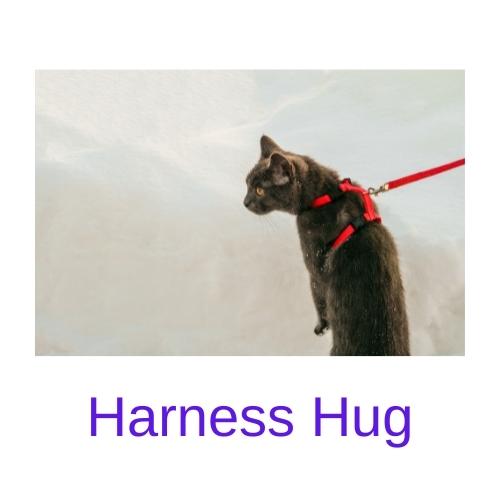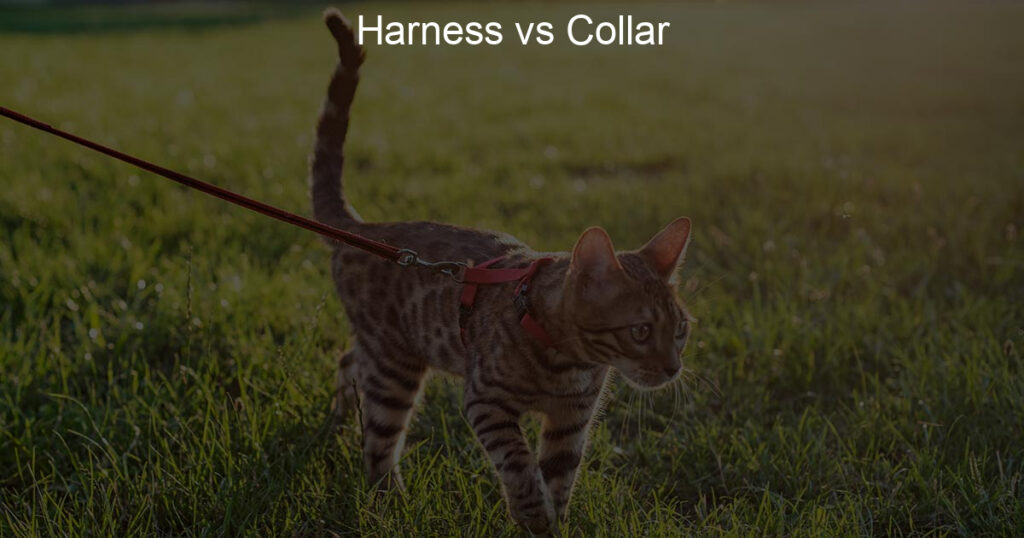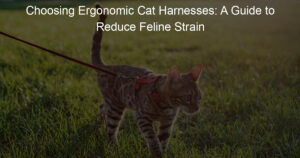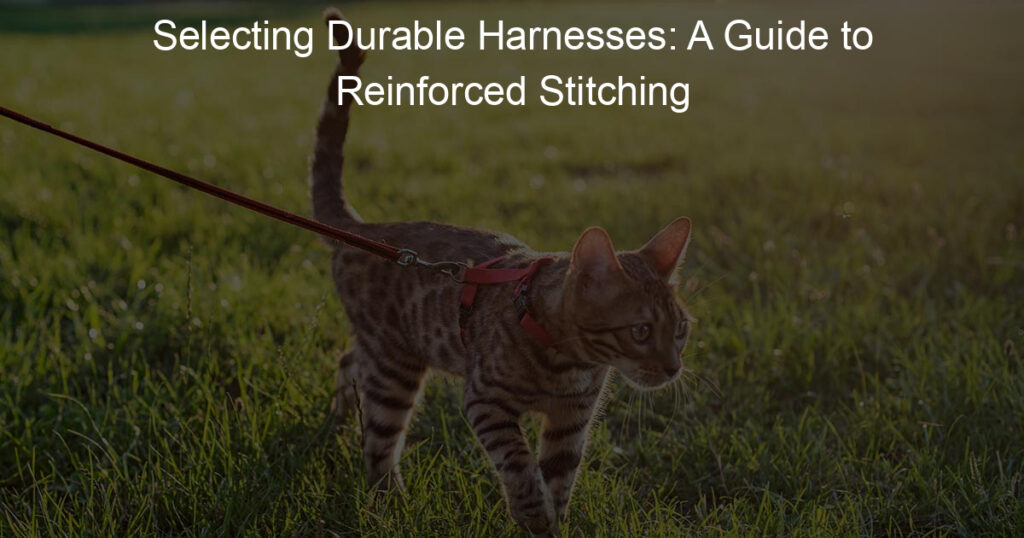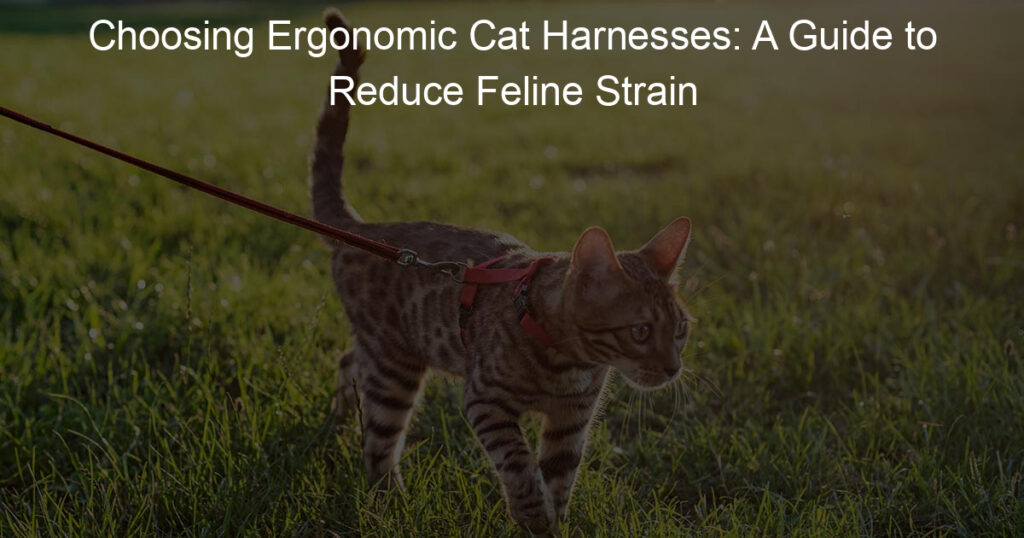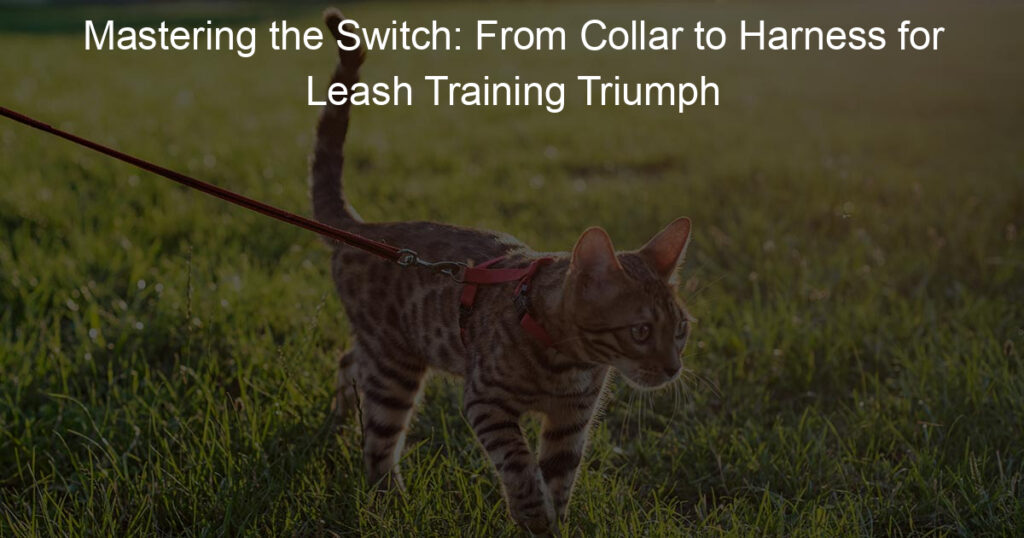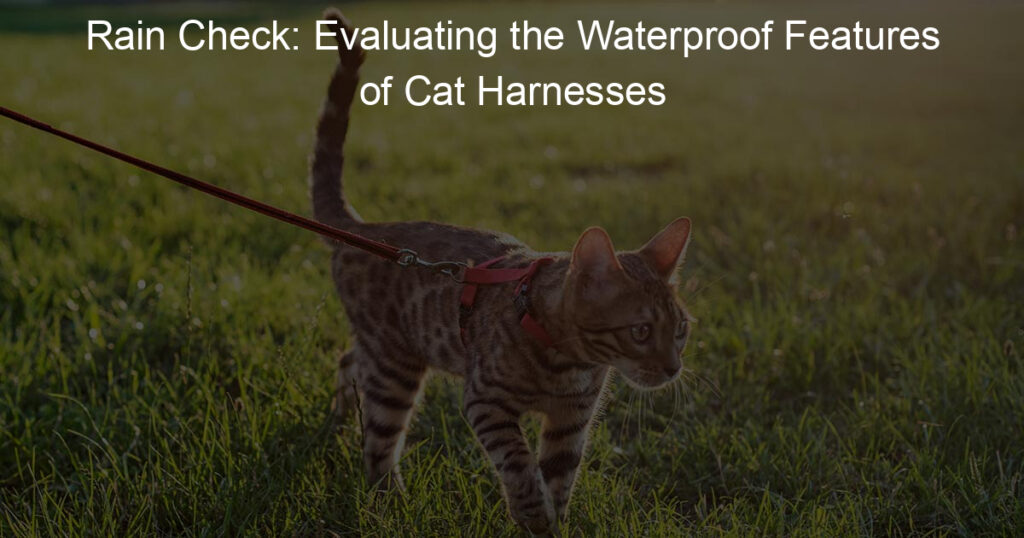Harnesses and collars both have their pros and cons when it comes to walking your cat. Which is best for your cat depends on its individual personality and needs. Keep reading to learn more about harnesses vs collars for cats!
Is it better to use a collar or harness?
When it comes to cat owners, there is an ongoing debate about whether it is better to use a collar or a harness. While the choice is ultimately up to the pet lover, there are pros and cons to both. Collars can be simpler for cat owners since they come in a wider variety of sizes, materials, and styles available than harnesses. However, cat collars are typically considered less secure than cat harnesses since cats have smaller necks and collars can easily be slipped out of.
On the other hand, pet lovers may find cat harnesses more comfortable and secure as they often have larger straps that sit across the cat’s chests instead of their necks. Ultimately, providing a sense of security while also allowing your cat their freedom should be the number one priority when choosing between a collar or harness for your cat.
Is a harness the same as a collar?
For cat lovers and pet lovers alike, this is a topic of much debate – is a harness the same as a collar? The truth is, while they may appear to be similar in style, they are designed for different purposes. Harnesses tend to fit around the cat’s abdomen and chest whereas collars provide protection and identification with tags or microchipping.
So while the cat looks fabulous in either one, make sure you pick the right one to keep your cat safe and protected.
Why use a harness and not a collar?
Pet lovers who own cats know that a cat’s safety should always be a top priority. One way to ensure your cat stays safe and secure is to use a harness instead of a collar. Not only does a harness provide better control and management of your cat, but it also gives them freedom of movement while keeping them secure and comfortable.
A cat can become snagged or strangled in a collar, but this isn’t the case with a well-fitting harness that promises greater safety for your feline companion. For cat owners looking for peace of mind, using a reliable cat harness is key.
Why can’t cats jump with harnesses?
There are actually multiple reasons why cats can’t jump when they’re wearing harnesses. The most obvious reason is simply that the harness prevents them from having the full range of motion necessary to jump up onto ledges or other higher places. This isn’t too much of a problem for many cats because they usually don’t need to jump very often, but for cats who like to climb and explore, it can be frustrating.
Additionally, some cat harnesses are made of materials that are too heavy or rigid, causing the cat to feel restricted and uncomfortable while trying to maneuver itself around or while jumping. As we all know, cats prefer their movements – including jumping – to feel as natural as possible, so this can put them off when attempting a leap with a restrictive harness on.
Do vets recommend collars or harnesses?
When it comes to cat collars or cat harnesses, pet lovers can turn to their trusted veterinarian for advice on which is a better fit for their pet. While both provide cats with an added sense of security and a way to conveniently attach identification tags, there are certain considerations related to cat behavior that can make a collar less ideal than a harness.
Veterinarians typically recommend cat harnesses as the safer and more comfortable option for cats because they are designed to distribute pressure on the chest and shoulders rather than the delicate neck area. Opting for a cat harness not only encourages safety but also allows cat owners the opportunity to build trust when out walking with their pets.
What age can you leash-train a cat?
Leash training a cat may seem like an impossible task, but it can be done! Generally speaking, the best age to begin leash training is around 3-4 months. At this age, cats will have strong exploratory instincts and will be more open to learning new concepts. It’s important to keep in mind that cats are individuals with individual personalities, so it could take some time and patience while you train your cat on a harness or leash.
To make things easier, start by getting your cat used to wearing a collar before graduating to a harness or leash. Once your cat is comfortable with its collar, use treats as rewards every step of the way when introducing the harness or leash so that your cat associates positive experiences with the new objects. Finally, find out what works best for you and adjust accordingly – each cat is different so what works for one may not work for another!
Wrapping up: Harness vs Collar
To sum it up, the decision to decide between harnesses and collars for your furry friend falls on personal preference. Both have benefits and drawbacks, such as strength and control, fashionability, and ease of use. With proper research, any owner should be able to decide which is best for their pup’s age, size, and lifestyle.
Furthermore, while a good collar or harness may seem expensive upfront, it can last much longer than other products on the market. Ultimately, with the right sort of equipment, you can have a fun time outdoors with your pet companion!
